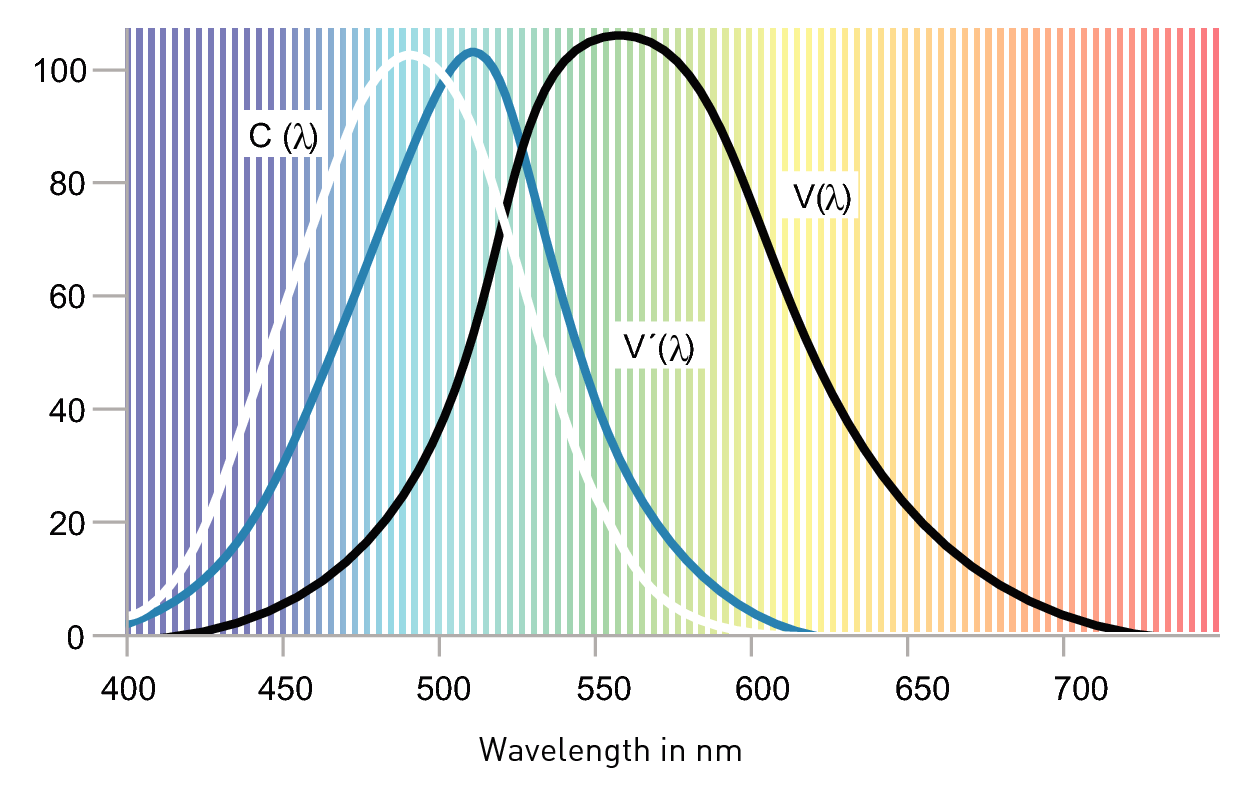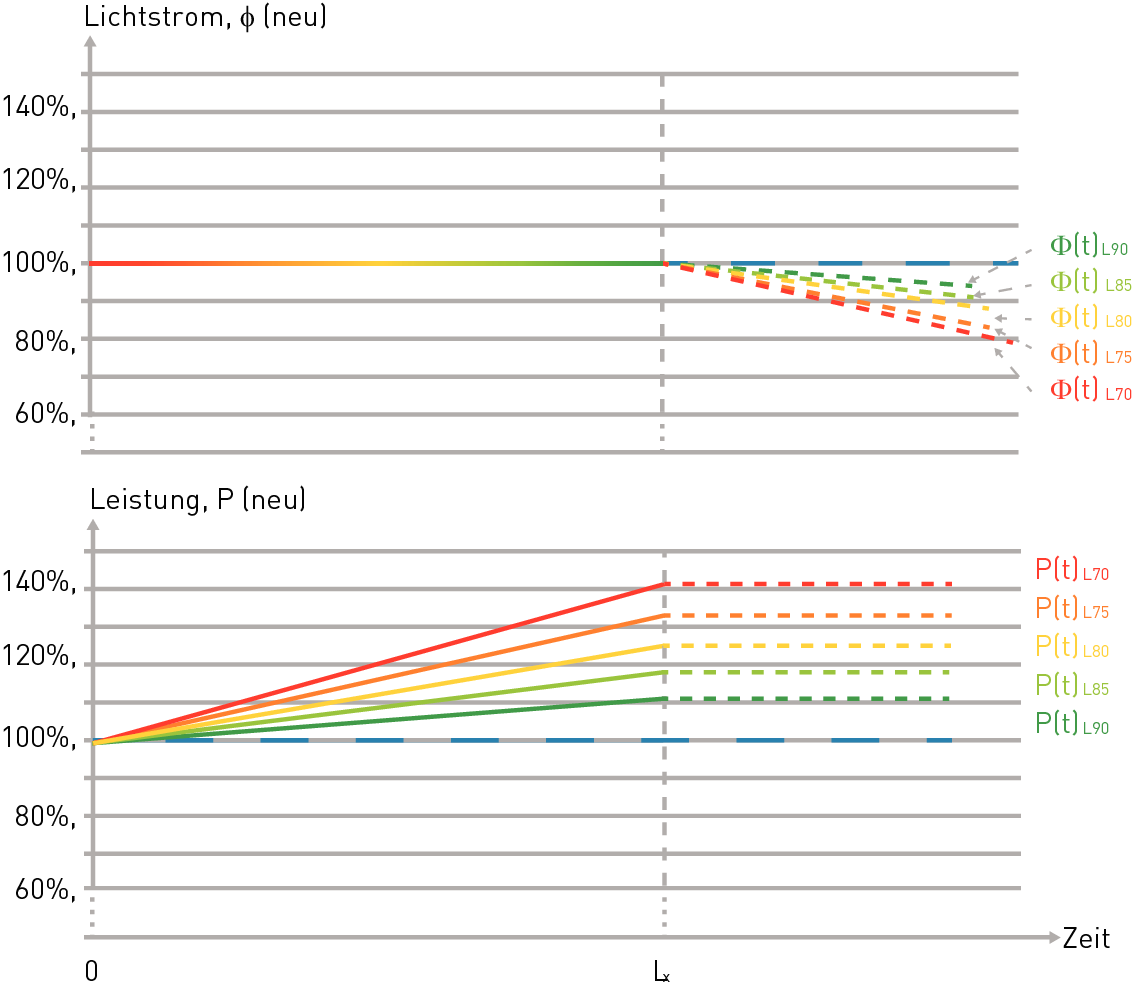Colour rendering index ( – general, Ra) Proximity of the seen body colour to its appearance under the respective reference light source. To determine the value of Ra, visually perceived colour variations (special colour rendering indexes) from 8 standardised test colours have to be evaluated, illuminated by the light source to be tested against a reference light source. The general colour rendering index is the average value of the special colour rendering indexes identified using this method. The lower the average variation value, the better the colour rendering characteristic of the tested light source, and the higher its Ra value. A light source with Ra = 100 renders all colours identically to the reference light source. The lower the Ra value, the lower the quality of the colour rendition. For colour temperatures up to 5.000 K the reference light source is a black body radiator (see below). For higher colour temperatures the reference light source is a standardised daylight spectrum at 6.500 K.





